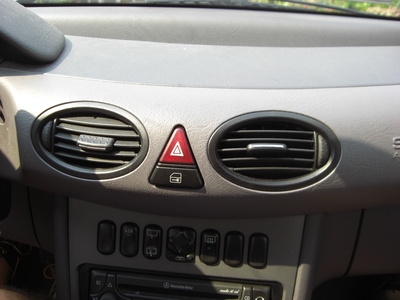
A car air conditioner is a complicated component system of your vehicle. Although it does not affect the overall operation of a car, the air conditioning unit plays an important role in the level of comfort you experience while driving in extremely warm temperatures. The air conditioner does impact and communicate with other systems in the vehicle. It also experiences wear and tear, malfunction and requires maintenance of its own to ensure normal operation. A major factor in the normal operation of the AC unit is the internal pressure of its closed system, which may give you insight into needed repairs and maintenance.
Open the hood of the car. Locate the service ports for the air conditioning system. On older model cars (1994 or earlier), the port fittings have threads, while newer models feature a quick-fit conical style. All cars will have one port for high pressure and one for low pressure readings. The ports appear as vertical connectors sticking out of tubes. The low pressure port will be smaller than the high pressure port.
Connect the pressure gauge. The gauge has two hoses, one for each port. It will be apparent which hose fits the low side and which fits the high side by the markings on the hoses. In color-coded pressure gauge kits, a blue hose is meant for low pressure and a red hose for high.
Record the air conditioning systems static levels with the car and system off. Observe the gauge for low pressure (0 - 120 psi markings). Consult your pressure chart to ensure that the reading is within the normal range for static pressure with your current air temperature.
Start the car and turn the air conditioner on to its max level. Ensure that both doors are closed and leave at least two windows open. With the car stationary, rev the engine to 1,200 RPM to simulate a stable engine speed. This will create a stable testing environment with the system in full operation.
Record the high and low pressure gauge readings while simulating stable engine speed. Compare your readings with the pressure guide chart. Acceptable ranges of pressure are determinate on ambient air temperature and vary widely. If your readings are not within acceptable ranges, stop the system and repeat the reading. If your readings still aren't normal, consult a mechanic.